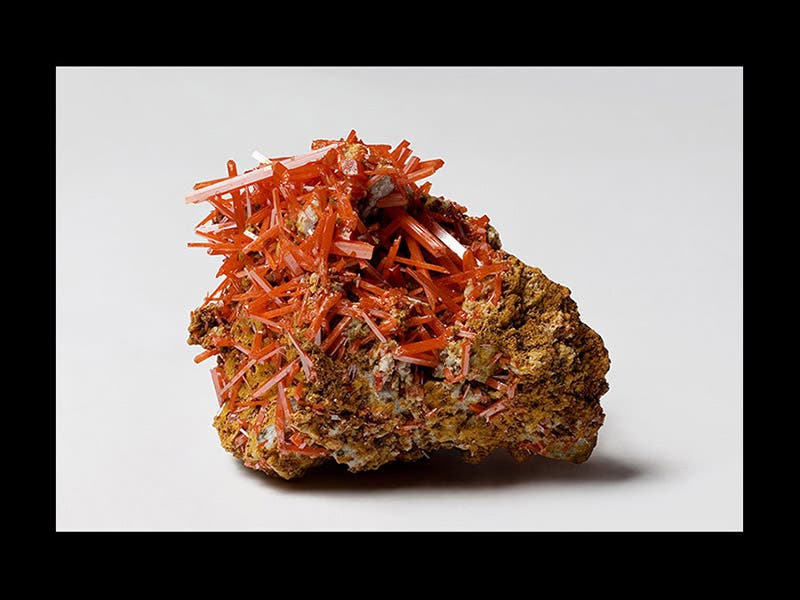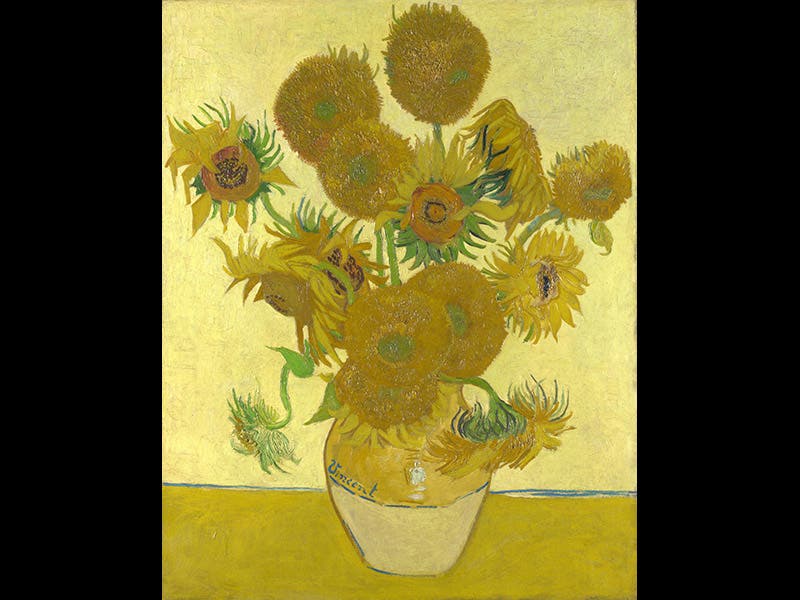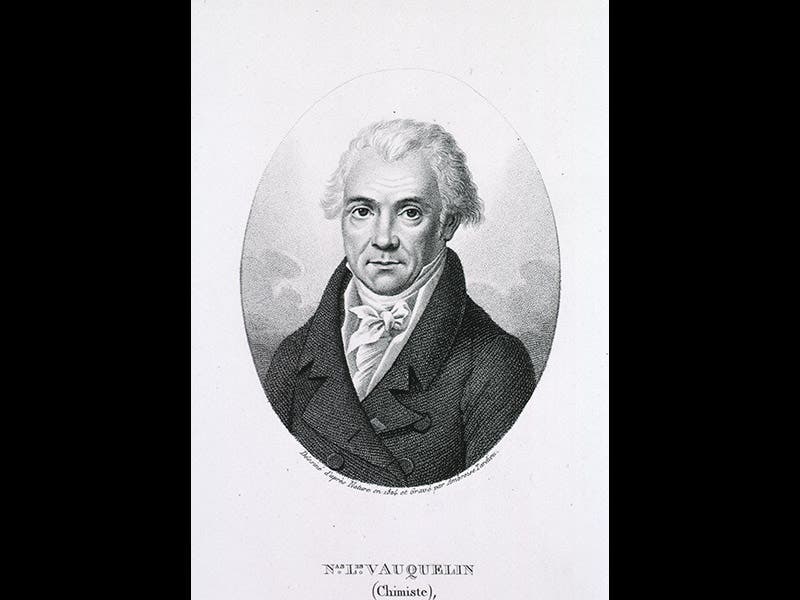Scientist of the Day - Louis Vauquelin
Louis Nicolas Vauquelin, a French chemist, was born May 16, 1763. In 1798, Vauquelin isolated a new element, chromium, from an ore called crocoite. Crocoite is mostly lead chromate and has a deep orange color (second image). Intrigued by the possibility of making a new pigment, by 1809 Vauquelin had learned how to produce a bright yellow powder, chrome yellow, which is lead chromate in a different form than found in crocoite. At first artists paid little heed, because they could not obtain chromium metal, but once local deposits were discovered in France and Britain, chrome yellow became a necessary part of the artist's palette.
Vincent Van Gogh loved chrome yellow, especially for his sunflowers. There are many Van Gogh sunflower still lifes; we see above one in the Neue Pinakothek in Munich (first image). Unfortunately, chrome yellow has a tendency to darken over time and turn a deep brown, and to worsen the problem, Van Gogh sometimes mixed his yellow with white, which hastens (we now know) the process of pigment deterioration. Thus many of his sunflowers now look like the one in the National Gallery in London (third image). Chemists have been studying the problem, and there is apparently some hope that the browning process can be slowed down, but unfortunately, it cannot be reversed. For this reason, and because chrome yellow is toxic, most artists now rely on cadmium yellow for their sunflowers.
Vauquelin’s original paper on chrome yellow appeared in the Annales de Chimie for 1809, which we have in the Library’s serials collection. It is not, alas, illuminated with chrome yellow illustrations. There are a number of engraved portraits of Vauquelin in the National Library of Medicine; we display above the one we like the best (fourth image).
Dr. William B. Ashworth, Jr., Consultant for the History of Science, Linda Hall Library and Associate Professor, Department of History, University of Missouri-Kansas City. Comments or corrections are welcome; please direct to ashworthw@umkc.edu.








![Columbine, hand-colored woodcut, [Gart der Gesundheit], printed by Peter Schoeffer, Mainz, chap. 162, 1485 (Linda Hall Library)](https://assets-us-01.kc-usercontent.com:443/9dd25524-761a-000d-d79f-86a5086d4774/3829b99e-a030-4a36-8bdd-27295454c30c/gart1.jpg?w=210&h=210&auto=format&fit=crop)

